Ely Cathedral, Cambridgeshire - The Nave - early undivided back Stengel postcard
- Condition : Used
- Dispatch : 2 Days
- Brand : None
- ID# : 125000481
- Quantity : 1 item
- Views : 260
- Location : United Kingdom

- Seller : justthebook (+1704)
- Barcode : None
- Start : Fri 28 Feb 2014 10:17:54 (BST)
- Close : Run Until Sold
- Remain : Run Until Sold
More Listings from This Seller view all
Seller's Description
- Postcard
- Picture / Image: Ely Cathedral, Cambridgeshire - the Nave - early undivided back postcard (these were the norm before the rules changed on writing the message on the address side in 1902
- Publisher: Stengel & Co., Berlin
- Postally used: no
- Stamp: n/a
- Postmark(s): n/a
- Sent to: n/a
- Notes / condition:
Please ask if you need any other information and I will do the best I can to answer.
Image may be low res for illustrative purposes - if you need a higher definition image then please contact me and I may be able to send one.
------------------------------------------------
Postage & Packing:
UK (incl. IOM, CI & BFPO): 99p
Europe: £1.60
Rest of world (inc. USA etc): £2.75
No additional charges for more than one postcard. You can buy as many postcards from me as you like and you will just pay the fee above once. (If buying postcards with other things such as books, please contact or wait for invoice before paying).
Payment Methods:
UK - PayPal, Cheque (from UK bank) or postal order
Outside UK: PayPal ONLY (unless otherwise stated) please. NO non-UK currency checks or money orders (sorry).
NOTE: All postcards are sent in brand new stiffened envelopes which I have bought for the task. These are specially made to protect postcards and you may be able to re-use them. In addition there are other costs to sending so the above charge is not just for the stamp!
I will give a full refund if you are not fully satisfied with the postcard.
----------------------------------------------
Text from the free encyclopedia WIKIPEDIA may appear below to give a little background information (internal links may not work) :
*************
Ely Cathedral (in full, The Cathedral Church of the Holy and Undivided Trinity of Ely) is the principal church of the Diocese of Ely, in Cambridgeshire, England, and is the seat of the Bishop of Ely and a suffragan bishop, the Bishop of Huntingdon. It is known locally as ""the ship of the Fens"", because of its prominent shape that towers above the surrounding flat and watery landscape.
Most of what is known about the early history of Ely comes from Bede's Historia ecclesiastica gentis Anglorum and above all from the Liber Eliensis, an anonymous chronicle written at Ely some time in the 12th century and covering the history of the Abbey and Cathedral from 673 until the mid-12th century.[citation needed] In 1322 the Norman central tower collapsed. In its place Alan of Walsingham built the current octagonal lantern.
The first Christian building on the site was founded by St. Æthelthryth (romanised as ""Etheldreda""), daughter of the Anglo-Saxon King Anna of East Anglia, who was born in 630 at Exning near Newmarket.[1] She may have acquired land at Ely from her first husband Tondberht, described by Bede as a ""prince"" of the South Gyrwas.[2] After the end of her second marriage to Ecgfrith, a prince of Northumbria, she set up and ruled a monastery at Ely in 673, and, when she died, a shrine was built there to her memory. The monastery is traditionally believed to have been destroyed in the Danish invasions of the late 9th century, together with what is now the city. However, while the lay settlement of the time would have been a minor one, it is likely that a church survived there until its refoundation in the 10th century.[3]
A new Benedictine monastery was built and endowed on the site by Athelwold, Bishop of Winchester, in 970, in a wave of monastic refoundations which locally included Peterborough and Ramsey.[4] This became a cathedral in 1109, after a new Diocese of Ely was created out of land taken from the Diocese of Lincoln.
The cathedral is built from stone quarried from Barnack in Northamptonshire (bought from Peterborough Abbey, whose lands included the quarries, for 8000 eels a year), with decorative elements carved from Purbeck Marble and local clunch. The plan of the building is cruciform (cross-shaped), with an additional transept at the western end. The total length is 537 feet (163.7 m),[5] and the nave at over 75 m long (250 ft) remains one of the longest in Britain. The west tower is 66m high (215 ft). The unique Octagon 'Lantern Tower' is 23 m (74 ft) wide and is 52 m (170 ft) high. Internally, from the floor to the central roof boss the lantern is 43 m (142 ft) high.
The present cathedral was started by Abbot Simeon (1082–1094, brother of Walkelin, the then bishop of Winchester) under William I in 1083. Building continued under Simeon's successor, Abbot Richard (1100–1107). The Anglo-Saxon church was demolished, but some of its relics, such as the remains of its benefactors, were moved to the cathedral. The main transepts were built early on, crossing the nave below a central tower, and are the oldest surviving part of the cathedral. Construction work continued throughout the 12th century. The Western transepts and tower were completed under Bishop Ridel (1174–89) in an exuberant Romanesque style with a rich decoration of intersecting arches and complex mouldings.[citation needed]
A Galilee porch was added under Bishop Eustace (1198–1215) in the Early English Gothic style. It was originally a two-storey structure (it was opened up into a single vaulted space in the 18th century) where liturgical processions could gather before entering the nave. Several details of its decoration, particularly the 'syncopated arches' and the use of Purbeck marble shafts, reflect the influence of St Hugh's Choir at Lincoln Cathedral, built a few years earlier.[citation needed]
Under Bishop Northwold, work began on a new eastern end in 1234, replacing the short Norman chancel with a much grander 10-bay structure. Northwold's chancel, completed by around 1252, adopted several of the stylistic elements already used in the Galilee porch.[
type=printed postcards
theme=topographical: british
sub-theme=england
county/ country=cambridgeshire
number of items=single
period=pre - 1914
postage condition=unposted
Listing Information
| Listing Type | Gallery Listing |
| Listing ID# | 125000481 |
| Start Time | Fri 28 Feb 2014 10:17:54 (BST) |
| Close Time | Run Until Sold |
| Starting Bid | Fixed Price (no bidding) |
| Item Condition | Used |
| Bids | 0 |
| Views | 260 |
| Dispatch Time | 2 Days |
| Quantity | 1 |
| Location | United Kingdom |
| Auto Extend | No |




 for 1 item(s)
for 1 item(s)







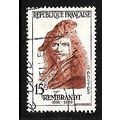
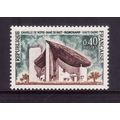
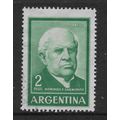
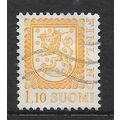
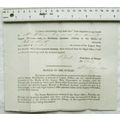
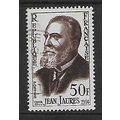


![ITALIEN ITALY [1891] MiNr 0061-66 ( O/used )](https://pic.ebid.net/upload_small/8/9/4/uo_1512747515-31559-10.jpg)

